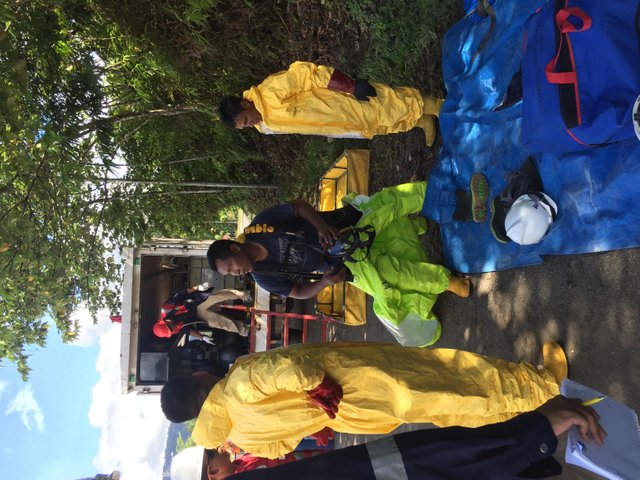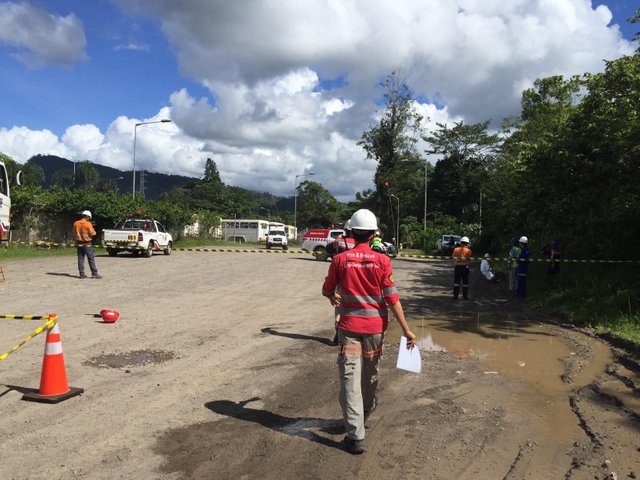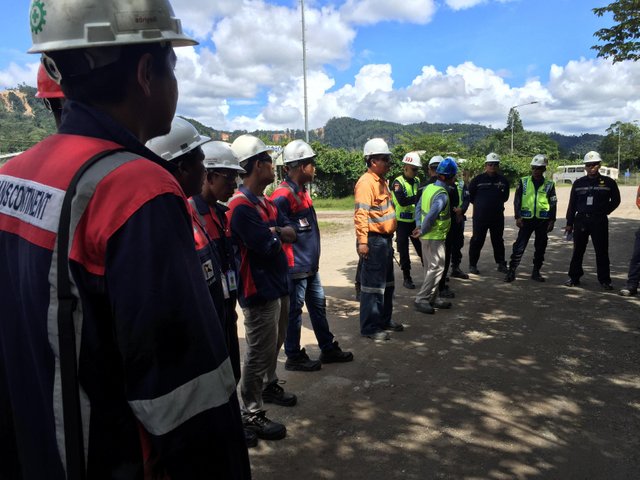All About Cyanide Hazard
Special Handling of HCL spill incident.
This time I want to discuss and try to share some knowledge about HCL leakage handling in transit.
Before long discussion let us know first what is HCL

MATERIAL SAFETY DATA SHEET
HYDROCHLORIC ACID
IDENTITY OF PRODUCTS AND COMPANIES
PRODUCT NAME: Hydrochloric acid
CHEMICAL FORM: HCl
PRODUCTION CODE: -
SYNONIM: Chloride acid, muriic acid, Hydroge chlorideCOMPOSITION OF MATERIALS
Material 36% by weight CAS No.7647-01-0
Exposure Limits: 5ppm (7.5 mg / m3) (TLV-C)HAZARDS IDENTIFICATION
Summary of important hazards: Chloride acid is highly corrosive and toxic and irritant when in contact with skin, eyes or inhalation.
As a result to health:
EYE: Causing irritation can even lead to blindness
SKIN: Causes burns and dermatitis
TABLE: Causes burns of mucous membranes in the mouth, esophagus and mouth
INHALATION: Causes chronic bronchitis
Carcinogenic: No effect
Teratogenic: No effect
Reproduction: No effect

FIRST AID ACTION ON ACCIDENTS
Affected on:
EYE: Flush with running water for at least 15 minutes
SKIN: Wash with water as much as possible. Immediately remove contaminated clothing.
SWITCHING: When conscious, give 1 to 2 glasses for dilution. Avoid artificial sweeteners.
INHALED: Immediately move the victim to a sufficient place of air, give artificial respiration or oxygen victim immediately take it to the doctor.

FIRE FIGHTING MEASURES
a. Properties of combustible substances: Non-combustible
Flash point : -
b. The flame temperature itself: -
c. Flammable area
Flammability lowest limit: -
Flammable upper limit: -
d. Extinguishing media: Applicable with ordinary fire extinguishers. Containers exposed to heat can be sprayed with water to cool, but water should not enter the container.
e. Special hazards: When contact with metals will produce flammable hydrogen gas
f. Fire extinguishing instructions: Applicable with ordinary fire extinguishers. Containers exposed to heat can be sprayed with water to cool but water should not enter the container. Wear protective clothing and breathing apparatus.
ACTIONS ON SPILL AND LEAKAGE
a. Small spills and leaks: If leaks are not large, cover with dry soil, dry sand or other unburned material followed by plastic sheets to avoid spreading or contact with rain water.
b. Large spills and leaks: Gas leak handling or spillage of Hcl solution should wear personal protective equipment, especially breathing apparatus, skin (body)
c. Personal protective equipment: Chemical absorbent Respirator HCL or air respirator (SCBA), Glasses (goggles) or face shield (full face), gloves (neoprene, nitrile).

STORAGE AND HANDLING MATERIALS
a. Material handling: Working with gas or steam HCl should be in a fume hood. Be wary of gas leaks.
b. Prevention of exposure: Use SCBA and protective clothing
c. Fire and explosion prevention measures
d. Storage: Store in a cool, ventilated place and the building floor must be acid-resistant.
e. Special requirements of material storage: Keep away from oxidizing agents and alkali materials, as well as cyanides, sulfides, formaldehyde, sodium metals, mercury sulfates and ammonium hydroxides. Check for acid leakage.PRELIMINARY CONTROL AND SELF-PROTECTOR EQUIPMENT
a. Technical control: Use a common Ventilation that covers to keep the dust to the lowest possible level.
b. Personal protective equipment: Chemical absorbers HCl or air respirators, goggles, Lab coats, full face, neoprene gloves
- PHYSICAL AND CHEMICAL PROPERTIES
Shape: Liquid
Strong scent
Color: Clear until slightly yellowish
Mass type: 2.13
Boiling Point: 85 oC
Melting point: -20oC
Vapor pressure (20oC): 20 mbar
Solubility in Water (20 ° C): dissolved
82.3 g / 100 m
pH (20 oC): 1

- REACTIVITY AND STABILITY
a. Properties of Reactivity: HCl compounds are stable at room temperature. By the influence of heat will break down into hydrogen and chlorine. Solutions in water are highly reactive with metals and produce explosive hydrogen gas. Reacting with the oxidizing agent produces chlorine gas.
b. Properties of stability: Stable under pressure with normal temperature.
c. Conditions to avoid: hot and humid
d. Substances to be avoided: Aluminum, amines, carbide, hydrides, fluorides, alkali metals, metals, strong salts from oxihalogone, concentrated H 2 SO 4, semimetallic hydrogen compounds, semimetalic oxides, aldehyde, sulphides, lithium, silicide, vinymethyl ether
e. Decomposition material: Hydrochloric acid chlorine
f. Polymerization Hazards: -